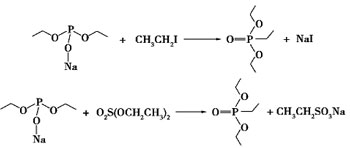Development of Diethyl Ethylphosphonate (DEEP)
As special refined chemical products, the flame retardant is widely used in the flame retardancy processing of various high polymer material. The flame retardant application has been applied to industrial production, commercial entertainment and various aspects of people’s life.
Organic phosphorus flame retardants is an important flame retardant. They have many types and wide application. The decomposition product and the thermal cracking of flame retardant polymer generate less corrosive and less toxicsubstances. Many types of organic phosphorus flame retardants have the effect of plasticizing and thermal stability, which are of great importance to improve the comprehensive properties of polymer materials.
At present, the research and development of organophosphorus flame retardant have become a hot spot in the research of flame retardant.
Diethyl Ethylphosphonate (DEEP) is an important member of the series of plasticized flame retardants since DMMP is used as the phosphating flame retardant. It has the advantages of low viscosity, good boiling point, good solubility, high phosphorus content, and good flame retardancy.
It is so stable in the polyether polyols and isocyanate.
It is more suitable for flame retardant and plasticizing of polyurethane foam products, unsaturated polyester resin and epoxy resin than traditional additives.
It is a kind of phosphorous high-efficiency plasticizer, it has the dual function of flame retardant and plasticizing.
It is a promising new variety of phosphorus – plasticized flame retardant.
There are many synthetic methods of flame retardant diethyl Ethylphosphonate (DEEP), and there are several main methods:
1. Triethyl phosphite is heterogeneous in the effect of alkylation agent iodoethane:
2. Sodium diethyl phosphite monosodium salt and iodoethane or diethyl sulfate reaction:
3. Ethyl phosphoryl chloride and ethanol sodium reaction:
The method 1 is best, it has a good conversion rate. But the iodoethane is expensive and the boiling point is low. It is also unstable and cannot be recycled. So the cost is high.
IRO research team found that the ethyl methylbenzene sulfonate can make triethyl phosphite heterogeneous into Diethyl Ethylphosphonate (DEEP) under the normal pressure after Michaelis – Arbuzov rearrangement reaction. After the reaction, the alkylation reagents and products are easy to be separated. Alkylation reagents also can be reused. The structure and performance of the alkylation reagent have not changed, so the cost has been greatly reduced. This alkylation reaction has not been reported in the literature.
The details of this experiment will be posted in the later articles. Please follow our website – www.irocoatingadditive.com.
Title






